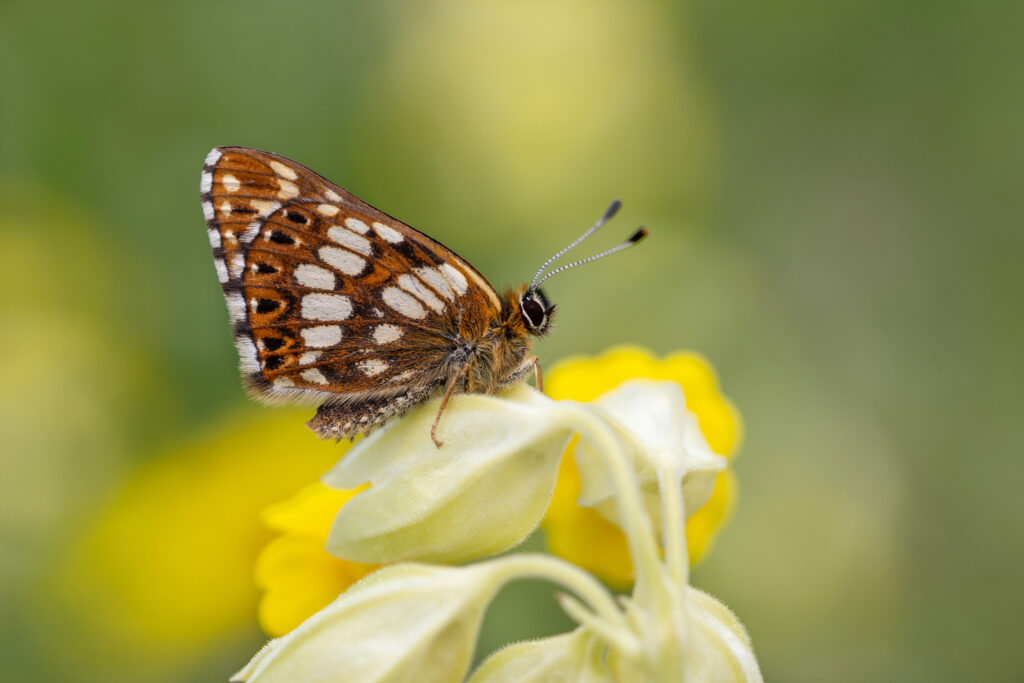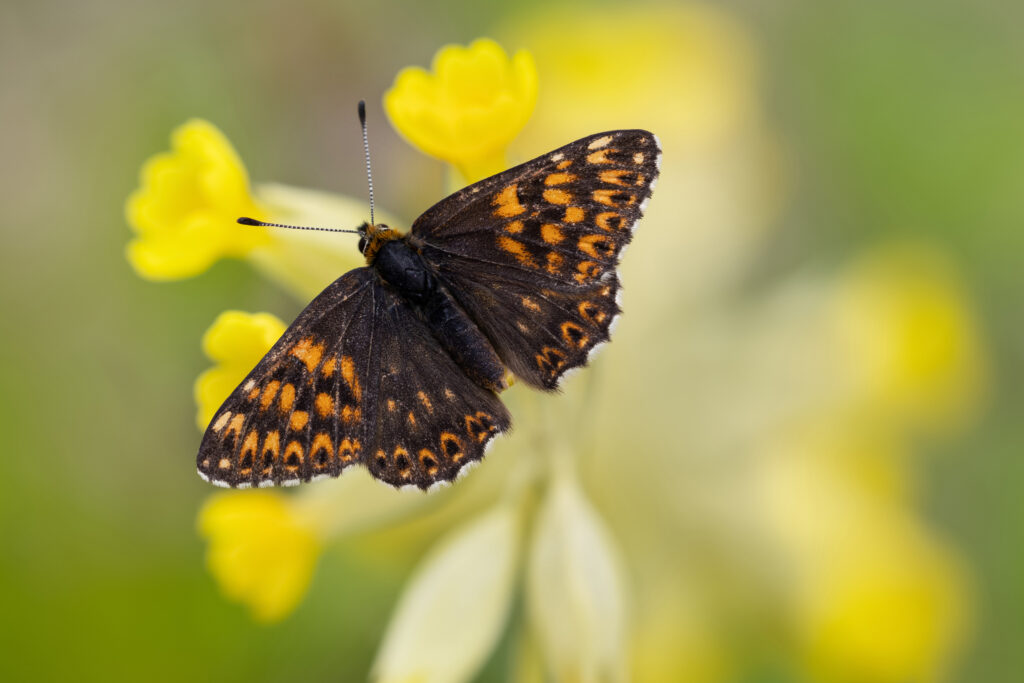Protected species of the month: Duke of Burgundy
As May comes to a close, we enjoy sunny, warm weather that invites everyone to explore and appreciate the diversity of Latvia's nature. Keen nature observers might spot this month's protected species - the Duke of Burgundy, as these butterflies fly from late May until mid-June.

The wingspan of the Duke of Burgundy (Hamearis lucina) is 29-31 mm for males and slightly larger for females at 31-34 mm. The upper side of the wings is a rich rusty brown with a beautiful dark pattern, while the underside is brown with red spots, and the hindwings may have white spots. The wing patterns of males and females differ only slightly.

Duke of Burgundy butterflies are active during the day and feed on flower nectar. The caterpillars' host plants are primarily primula species, particularly Primula veris, from which the species likely gets its Latvian name. There is one generation per year (in the south, there may be two generations). Females lay 1-2 eggs on the underside of the host plant's leaves. The caterpillars hatch after 2 weeks and develop from June to August, overwintering as pupae.
The Duke of Burgundy is widely distributed in Western Europe, from the Iberian Peninsula (Spain) and the United Kingdom to the Balkans and the Urals. The species has been found in the Scandinavian Peninsula (southern Sweden), as well as in Estonia and Lithuania. In Latvia, most of the species' current habitats are concentrated in the northwestern part of the country, from Kandava to Slītere.

The Duke of Burgundy inhabits open habitats such as forest edges, woodland clearings, and roadsides, preferring habitats with varied terrain and calcareous soil.
This species is protected in Latvia. The main population is found in specially protected natural areas - Čužu Mire and Slītere National Park. The species is threatened by ecosystem changes and degradation.
In the project, the Duke of Burgundy has been assessed as a highly endangered species with a very high risk of extinction in the wild (EN).
If you ever spot a Duke of Burgundy in the wild, report your observation to the Nature Conservation Agency or the Dabasdati.lv portal. We would also be happy to receive reports and photos of sightings on our Facebook page.
